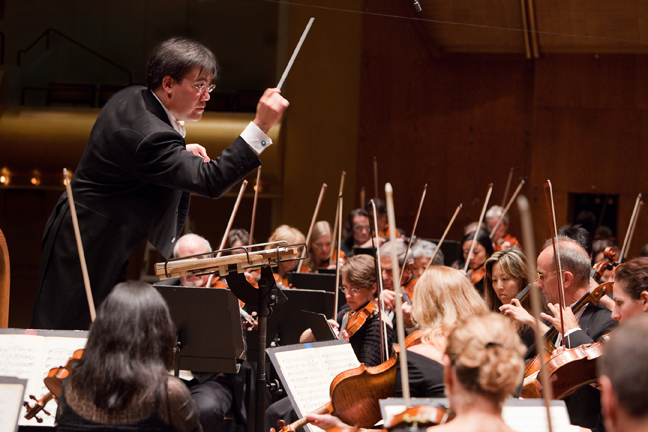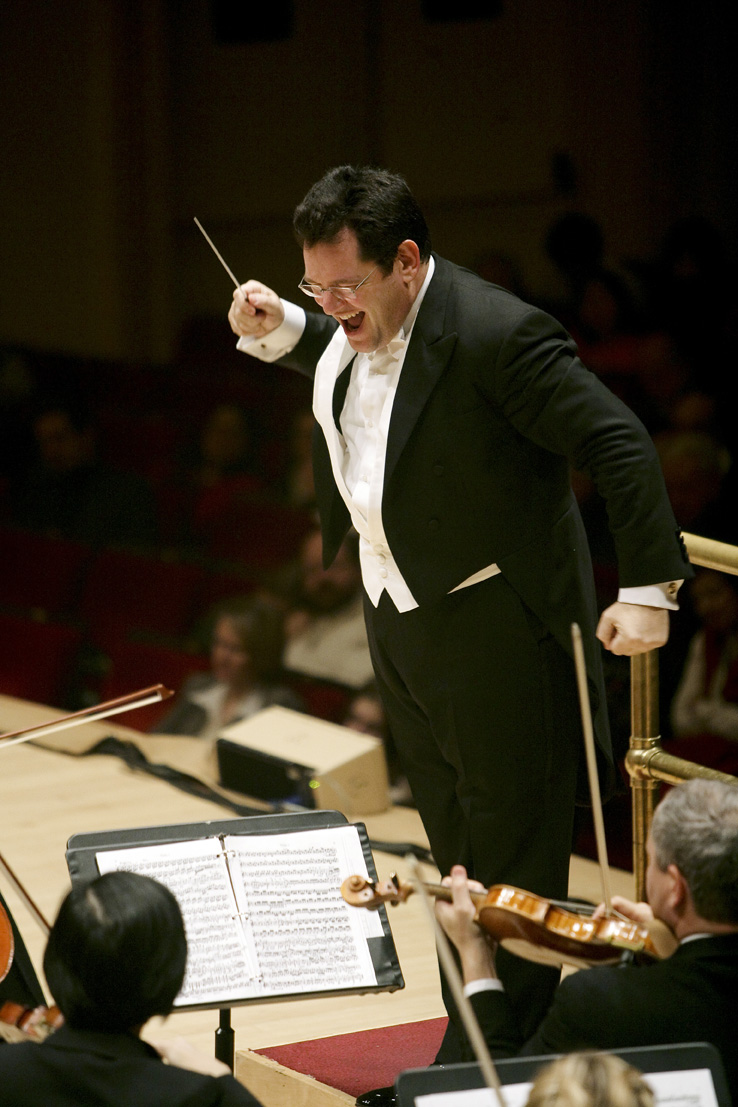From the moment she began, the audience was gripped by soloist Lisa Batiashvili’s bravura interpretation of Bartok’s Second Violin Concerto. The audacity and sheer technical brilliance of her playing were truly stunning. Completely at ease, Batiashvili powered through blisteringly fast string crossings and finger-crippling passages with effortless finesse. So strong was the spell she cast that at the conclusion of her delicate second movement, the theater erupted with coughing: out of respect, the audience had strained not to make a sound until the pause.
Batiashvili confidently attacked the thorny elements of Bartok’s concerto, but at times lyrical motifs lacked warmth and some solos felt ever so slightly rushed. Nevertheless, her flawless intonation, unshakeable sense of rhythm, and mega-watt stage presence proved that Batiashvili is truly an extraordinary artist.
After intermission, the New York Philharmonic presented Beethoven’s Symphony No. 3 in E-flat major, Op. 55, “Eroica”. Conductor Alan Gilbert coaxed a warm, round tone out of the Phil, and ensured that Beethoven’s symphony retained a sparkling sense of transparency even in its stormiest moments.
Careful not to allow the brass to overcome the rest of the orchestra, (as Zubin Mehta was often criticized of during his conducting tenure), Gilbert conjured a sensitive balance, which allowed all of the solo lines to soar above the cushion of sound generated by the rest of the orchestra. Beethoven’s idiosyncratic accents were also brought out beautifully by intelligent bowing choices in the violin sections owing to the fact that Gilbert is himself an accomplished violinist.
The “Marcia Funebre” was the most gripping movement– at the same time devastatingly bleak and sublime. It was perhaps the most moving live interpretation of this movement that I have ever witnessed.
When Beethoven’s “Eroica” first debuted, it was criticized for being too long. At the conclusion of the Philharmonic’s performance, however, the audience at Avery Fisher Hall was left wishing the heroic strains of Beethoven’s melodies would never cease.
–Holly Nelson for New York Concert Review; New York, NY


